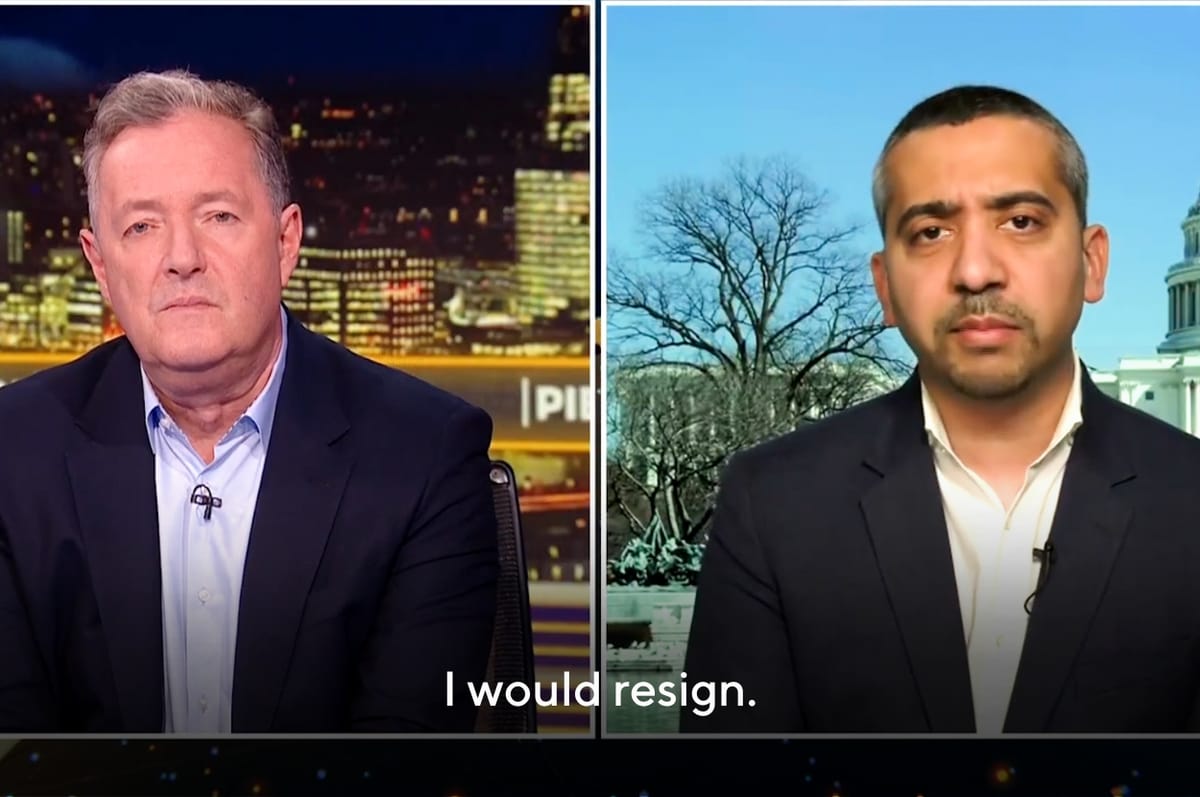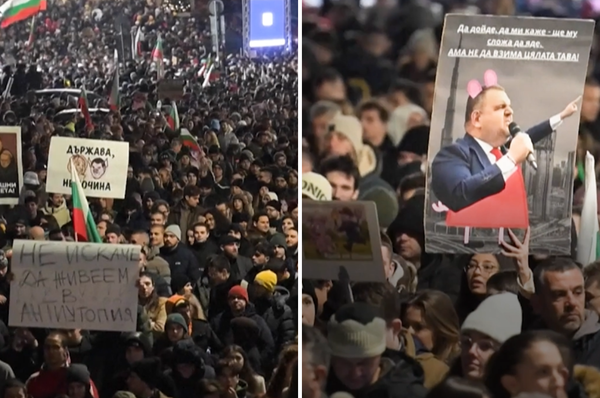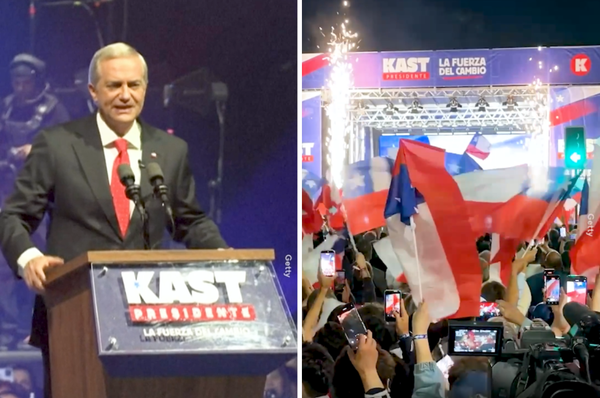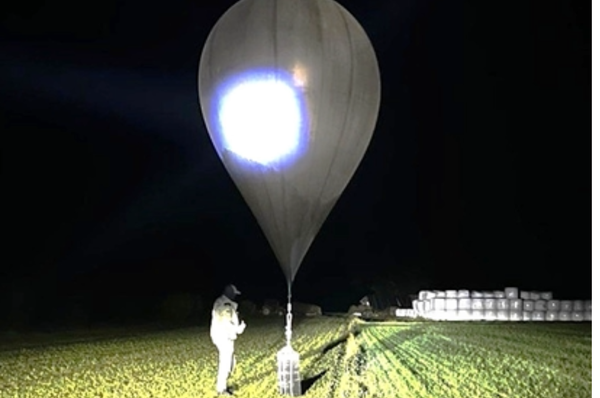Here’s What Happened In The War On Gaza In March 2024
Take a look back at some of the updates on Israel's war on Gaza in March 2024.
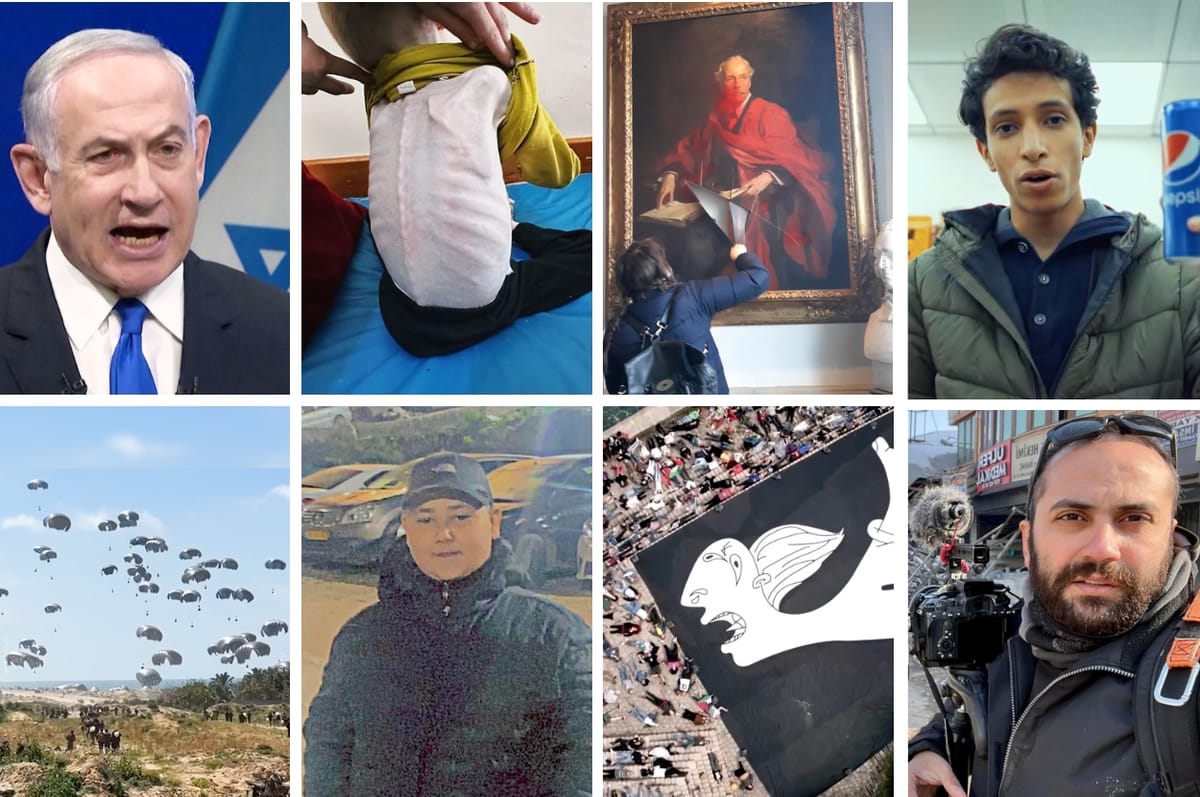
Take a look back at some of the updates on Israel's war on Gaza in March 2024.
1. Gaza is now experiencing the world’s worst hunger crisis
Gaza is suffering the world’s worst current hunger crisis. At least 15 children have now died from starvation in Gaza.
A photo of Yazan al-Kafarneh, a severely malnutrition 10-year-old Palestinian boy who had cerebral palsy, has been going viral online.
He had been receiving treatment at a hospital in Rafah, but died of severe malnourishment on March 4.
After declaring war on Hamas on Oct. 7, Israel has imposed a “total siege” of Gaza, blocking food, fuel and water from entering.
This has pushed a quarter of Gaza’s population on the brink of famine, according to the United Nations.
2. Israel continued to kill Palestinians trying to get food aid, having killed at least 400 people including in the Flour Massacre
After killing more than 112 people in the Flour Massacre, Israel is still killing Palestinians trying to get aid in Gaza.
Including the Flour Massacre on Feb. 29, Israeli forces have now killed at least 400 Palestinians trying to get aid.
Israel then went on to kill more Palestinians waiting for aid on March 3rd, March 5, March 7 and March 12.
And on March 13, Israel confirmed it attacked a UN food distribution center, killing at least 5 people, including a UN worker.
That’s the 165th UN worker to have been killed by Israel in Gaza since Oct. 7.
Israel then killed more Palestinians waiting for aid on March 14.
And on March 15, an Israeli airstrike killed 6 people and wounded at least 83 at an aid distribution center in central Gaza.
On the same day, Israeli helicopters and artillery also opened fire on hundreds of Palestinians waiting for aid in Gaza City, killing at least 20 people and injuring over 155.
3. 12 people died after they drowned trying to get airdropped aid that fell into the sea
12 people have died in Gaza after they drowned trying to reach airdropped aid packages that had landed in the sea.
The incident happened on Tuesday, March 26 in Beit Lahia in northern Gaza, according to a statement issued by Palestinian authorities.
Another six people were also killed on the same day when they were crushed in the crowd trying to reach aid.
Multiple videos circulating online showed hundreds of Palestinians running towards airdropped aid packages landing on the beach in Beit Lahia, with several people even venturing into the water and swimming to retrieve the parcels.
Videos showed that several of the cardboard aid boxes retrieved from the ocean had soaked through, contaminating the food inside.
4. As the holy month of Ramadan began, Israeli forces beat and blocked Palestinians worshippers from praying at Al-Aqsa Mosque
Israeli forces beat and blocked hundreds of Palestinian worshippers from entering Al-Aqsa Mosque in Israeli-occupied East Jerusalem to pray on the first night of Ramadan on Sunday March 10.
Videos shared on social media on Sunday, March 10, showed Israeli forces beating people who tried to cross through several doors of Al-Aqsa Mosque, the third holiest site in Islam, with batons.
The Taraweeh prayers take place every night of the holy month of Ramadan, and the mosque typically attracts tens of thousands of Muslims who pray in congregation.
Israeli forces also detained a number of worshippers at the gates,, according to Palestinian WAFA News Agency.
They also placed barbed wire on the fence near one of the main gates into the mosque compound, allowing only men and women above the age of 40 to enter.
Those who were barred from entering were forced to pray outside the grounds of the religious compound.
5. Israeli snipers also shot and killed this 13-year-old boy while he was playing with fireworks to mark Ramadan in Israeli-occupied East Jerusalem
Israeli snipers shot and killed this 13-year-old Palestinian boy while he was playing with fireworks to mark Ramadan.
On Tuesday night, March 12, Rami Hamdan Al-Halhuli was playing with his brother and friends in front of his family home in Israeli occupied East Jerusalem.
His family then urged him to light a firework, so he pointed it away from him and aimed up into the sky.
Before the firework could even go off, Rami was hit by a bullet fired by an Israeli border police officer, video of the moment showed.
In a statement, Israeli police said they had fired a single shot at a “suspect” who had “endangered the forces while firing aerial fireworks in their direction”.
Jerusalem officials said that Rami died from his wounds shortly after being shot.
Israel’s National Security Minister Itamar Ben-Gvir then called Rami a “terrorist” for shooting fireworks.
At a press conference on Wednesday, March 13, Ben-Gvir called the officer who shot Rami as a “hero and a warrior”, saying the officer had done an “exemplary job” and would receive the full support from his office.
Rami was one of four Palestinians killed by Israeli forces in occupied East Jerusalem and the West Bank on March 12.
6. But despite Israeli airstrikes destroying mosques in Gaza, hundreds of Palestinians still gathered to pray in their ruins
Palestinians held the first Taraweeh prayer among the ruins of a mosque in Rafah, in the southern Gaza Strip, as the month of Ramadan began.
Al-Farouk Mosque was destroyed by Israeli airstrikes on Feb. 22 but that didn’t stop Palestinians from holding their prayers there.
Videos widely shared on social media showed Palestinians, with portable lights and speakers, performing Taraweeh prayer on the evening of Sunday, March 10, in the rubble of Al-Farouk mosque.
Palestinian authorities said the Israeli army has destroyed 1,000 of 1,200 mosques in Gaza, including historic ones, since Oct. 7.
7. Israel’s military started attacking Al-Shifa Hospital in Gaza again, laying siege to it for more than two weeks and killing hundreds of people
After 14 days of besieging and attacking Gaza’s Al-Shifa Hospital, Israeli forces have finally withdrawn, leaving it in total destruction and completely burned.
Photos of the aftermath on Monday, April 1, showed bodies scattered in and around the remains of the hospital.
Some of the bodies appeared to have their hands and feet tied while others had been crushed by tanks or bulldozers.
Medical crews found at least 300 bodies, many of them decomposed, according to the Palestinian ministry of health.
Some 3,000 Palestinians including patients, civilians and medical staff had been sheltering inside Al-Shifa, which used to be Gaza’s biggest hospital but is now out of service.
The Israeli military had already raided Al-Shifa in November, claiming that it was being used as an “operational command center” by Hamas.
However, four months later, it still has failed to provide concrete evidence to support its claim.
8. Israeli prime minister Benjamin Netanyahu has insisted it will invade Rafah
Benjamin Netanyahu, Israel’s prime minister, has approved a plan to invade Rafah, where 1.4 million Palestinians are trapped with nowhere to go.
Israeli officials confirmed on Friday March 15 that Netanyahu had approved the decision, which includes plans to evacuate civilians to designated “humanitarian islands” elsewhere in Gaza.
However, they did not give a time frame for when the ground invasion would take place.
The announcement comes after Hamas presented a new ceasefire plan to permanently end the war, which would see it release all the Israeli hostages in exchange for Israel releasing Palestinians held in its prisons.
Netanyahu said the proposal consisted of “unrealistic demands” but will still send a team to Qatar for the ceasefire talks, which are being mediated by Qatar, Egypt and the US.
Just days earlier, Netanyahu vowed to press forward with his plan to invade Rafah in the southern Gaza Strip.
“To win this war, we must destroy the remaining Hamas battalions in Rafah. If not, Hamas will regroup, rearm and reconquer Gaza, and then we’re back to square one,” he said in a video address to a conference to the pro-Israeli AIPAC organization in Washington DC on March 12.
“And that’s an intolerable threat that we cannot accept,” he said.
9. After more than five months, the UN Security Council finally passed a resolution demanding an immediate ceasefire in Gaza for two weeks during Ramadan
After more than five months, the United Nations Security Council (UNSC) finally adopted a resolution demanding an immediate ceasefire in Gaza for the month of Ramadan, which ends in two weeks.
The resolution, which passed on Monday, March 25, also calls for Hamas to immediately and unconditionally release all hostages it seized on Oct. 7 and to urgently expand the flow of aid into Gaza.
Applause erupted in the room as the resolution, which was issued by the 10 elected countries in the UN, passed, with 14 members voting in favor, and the US abstained.
This was the first time the US did not use its right to veto as a permanent member of the council, after it repeatedly blocked several UNSC resolutions demanding a ceasefire over the past five months.
10. The UN also found Israel broke international law when it shot and killed this Lebanese journalist reporting at its border
The UN has found that Israel broke international law when it shot and killed this Lebanese journalist reporting at its border.
37-year-old Issam Abdallah, a journalist for Reuters, was killed on Oct. 13 in south Lebanon when he was covering fighting between the Israeli military and Hezbollah militants after Israel declared war on Hamas on Oct. 7.
He had been at the border with six other journalists from AFP, Al Jazeera and Reuters, and all of them were wearing helmets and flak jackets with “PRESS” written on them.
After the journalists live streamed for more than 45 minutes, the Israeli military fired two missiles towards them.
The first shell hit Abdallah and killed him instantly, according to a investigation by Reuters released in December.
Less than 37 seconds later, the Israeli army fired another tank round, setting Al Jazeera’s car on fire and wounding the other journalists.
On Wednesday March 13, the UN released its report of its own investigation, finding that Israel had broken international law by shooting at “clearly identifiable” journalists.
It found that there was no exchange of fire for more than 40 minutes before the Israeli tank opened fire.
11. This young Libyan filmmaker made a genius video showing why boycotting companies actually makes a difference
A video by a young Libyan filmmaker showing the impact of boycotting companies has gone viral, with people praising the genius way he showed how small individual actions can make a big difference.
“The story started after we saw the destruction and the gory videos of our Palestinians brothers,” 23-year-old Mohammed Alnaas told Almost. “I felt like we should do something about it.”
Alnaas said he and his friends then came up with the idea of tracing the journey of two Tunisian dinars.
“I liked this idea a lot, and as a filmmaker, I saw the potential it holds,” he said.
The video ends with a powerful image of a man holding a little girl as she stares into the missile coming down on them in slow motion before screen fades to black and the word “Boycott” appears on screen.
People online are praising the poignant way that Alnaas was able to capture the impact of boycotting companies such as McDonald’s, Starbucks and Coca-Cola, which have been supporting and benefiting from Israel’s war on Gaza.
“I would hope for my people to become more independent and therefore more powerful and start making their own local brands,” Alnaas said.
“I also believe if there was an economic uprising it would actually save innocent lives,” he added.
12. A British activist slashed a painting of Lord Balfour whose declaration led to Israel taking over Palestinian land
A pro-Palestine protester has spray painted and slashed a historic painting of Lord Balfour in Trinity College at the University of Cambridge in the UK.
In the video, which has since gone viral, a woman can be seen spraying red paint on the painting before using a sharp object to slash open the canvas of the Lord Balford painting.
Lord Arthur James Balfour was the former prime minister of the United Kingdom from 1902 to 1905.
In 1917, while serving as the foreign minister, he wrote the Balfour Declaration, which is a letter endorsing establishing a Jewish homeland in Palestine.
The declaration, which endorsed establishing a “national home for the Jewish people” in Palestine, not only increased popular support for Zionism around the world, but helped pave the way for the eventual creation of Israel.
The woman is from Palestine Action, a British protest network that aims to dismantle the UK’s complicity in Israel’s apartheid against Palestinians.
The group said the Balfour Declaration “paved the way for ethnic cleansing” of people in Palestine.
13. Google fired this engineer for calling out its role in supplying technology to the Israeli military
Google has fired an employee who disrupted a conference to publicly protest the company’s deal that supplies the Israeli government and its military with technology.
On Monday March 4, during the Mind the Tech conference in New York, Google Israel’s managing director, Barak Regev, was delivering a keynote speech when the Google Cloud engineer stood up and shouted, “I refuse to build technology that powers genocide or surveillance.”
“Project Nimbus puts Palestinian community members in danger. No cloud apartheid. No tech for apartheid! Free Palestine!” he was heard shouting as he was escorted away by the security.
Project Nimbus is a $1.2 billion contract between Google and Amazon to provide cloud and computing services to Israel, including its military.
Google fired the engineer, telling CNBC on Thursday, March 7 that the employee had “disrupted a coworker’s presentation during an official company event.”
The spokesperson added that the employee was fired for violating company policies and that such behavior is not okay.
No Tech For Apartheid, an organization opposing Project Nimbus, said on Friday, March 8, that Google is attempting to silence its employees as a way to cover up its unethical practices.
The group said that the worker had spoken from “a place of deep personal concern about the direct, violent impacts of their labor.”
The group said that the Cloud engineer had told human resources while he was being terminated that he was “proud to be fired for refusing to be complicit in genocide.”
14. In Spain, hundreds of people held a mass die-in for killed Palestinians
On Sunday Mar. 17, hundreds of protestors lay on the ground in the Basque country of San Sebastián in northern Spain, to pay tribute to the more than 31,000 Palestinians killed by Israel’s war on Gaza.
The protestors lay together to the sound of sirens on Concha bay next to a giant banner depicting a section of Picasso’s famous anti-war painting “Guernica”, which depicts the bombing of the Spanish town of Guernica by Nazi German soldiers in 1937 during the Spanish civil war.
15. And people in Taiwan also held a mass die-in to call for a permanent ceasefire
Earlier in March, more than 100 people in Taiwan staged a mass die-in protest to stand with the more than 33,000 Palestinians who have been killed by Israel’s war in Gaza and to demand a ceasefire.
More On Israel's War On Gaza

